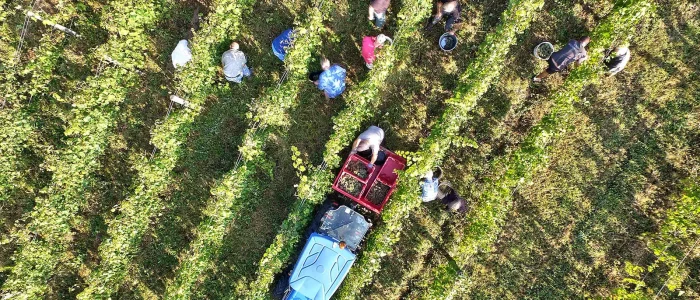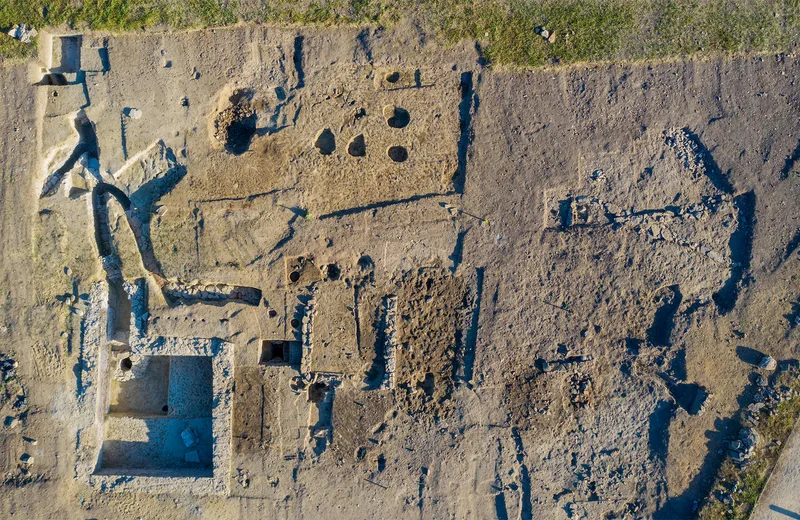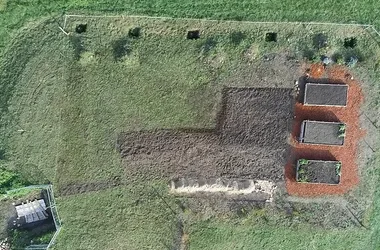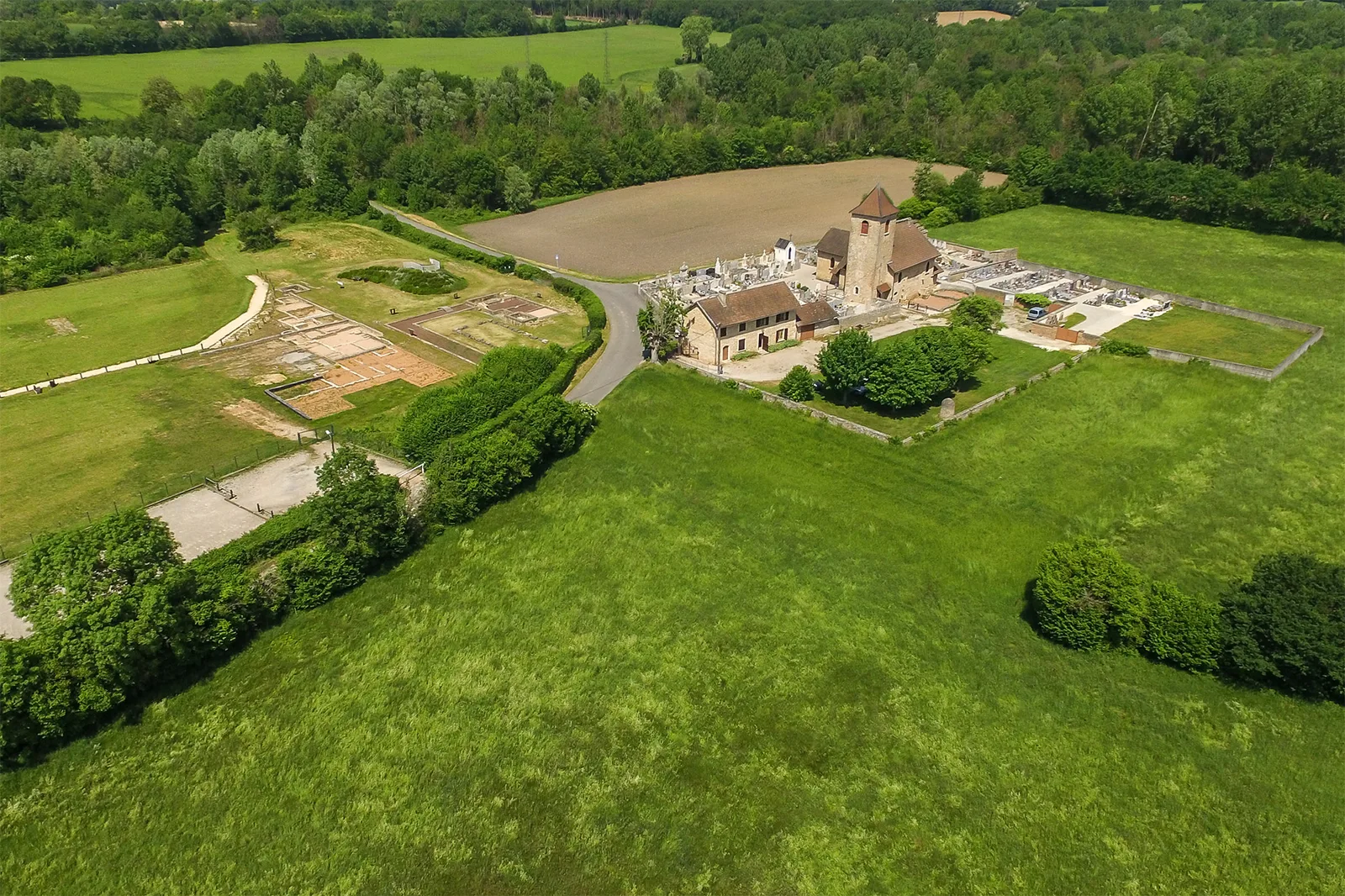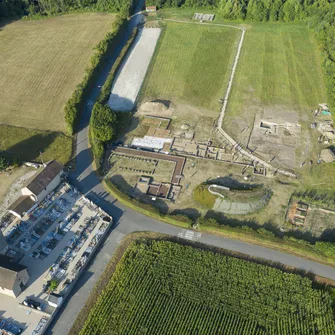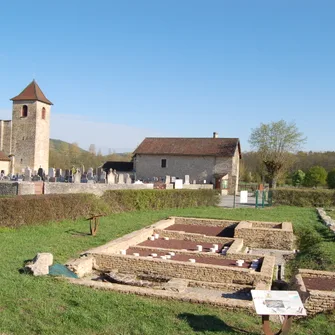Remains of a vast Gallo-Roman villa where the thermal baths, a hydraulic mill, a granary, the steward's habitat and an experimental antique garden are being carried out on which experiments are carried out according to the writings of Latin agronomists.
Located in the Rhône Valley, about thirty kilometers east of Lyon, in the commune of Saint-Romain-de-Jalionas, the Vernai site, away from the village, preserves the remains of a vast Gallo-Roman villa where part of the thermal baths, a hydraulic mill, a granary and the residence of the estate manager have been restored.
Stretching along the edge of a very anciently exploited marsh, a first villa erected around 40 BC, already displayed a model imported from Rome. This establishment will be transformed from the beginning of the Christian era into a real palace extending over 13 hectares.
After a phase of prosperity covering the entire Roman era, the villa disappeared in the XNUMXth century to make way for another farm associated with a chapel at the origin of the current church.
The last occupation dates from the 100th century with the construction of a dolphin castle which will be destroyed at the end of the XNUMX years war.
In 2018, the project to create an experimental Gallo-Roman garden gives the opportunity to implement known and supposed ancient horticultural practices on the archaeological site of Vernai. The ancient garden is an element of both the past and the future; in this sense it is a way of learning to weave a link between our modern life and a civilization that has disappeared. It makes it possible to make known ancestral practices sometimes still used or rediscovered of which we are the heirs. This garden will be an opportunity to experience the advice of Latin agronomists and put it into practice. It will make it possible to better apprehend and understand the use that men had of plants, their symbolic, magical character, their medicinal and food virtues.
The garden is designed according to three major axes:
- Knowledge of ancient horticultural uses and practices
– Environmental protection by encouraging biodiversity and safeguarding ancient plant species
– The creation of a place of exchange and sharing for all ages.
The garden remains a modern creation, but its design is based on ancient iconographic texts as well as on archaeo-botanical studies.
Experimental archeology occupies a predominant place in the life of this garden. It will lead to the development of this space through a regular analysis of the choice of practices and plantations.
Stretching along the edge of a very anciently exploited marsh, a first villa erected around 40 BC, already displayed a model imported from Rome. This establishment will be transformed from the beginning of the Christian era into a real palace extending over 13 hectares.
After a phase of prosperity covering the entire Roman era, the villa disappeared in the XNUMXth century to make way for another farm associated with a chapel at the origin of the current church.
The last occupation dates from the 100th century with the construction of a dolphin castle which will be destroyed at the end of the XNUMX years war.
In 2018, the project to create an experimental Gallo-Roman garden gives the opportunity to implement known and supposed ancient horticultural practices on the archaeological site of Vernai. The ancient garden is an element of both the past and the future; in this sense it is a way of learning to weave a link between our modern life and a civilization that has disappeared. It makes it possible to make known ancestral practices sometimes still used or rediscovered of which we are the heirs. This garden will be an opportunity to experience the advice of Latin agronomists and put it into practice. It will make it possible to better apprehend and understand the use that men had of plants, their symbolic, magical character, their medicinal and food virtues.
The garden is designed according to three major axes:
- Knowledge of ancient horticultural uses and practices
– Environmental protection by encouraging biodiversity and safeguarding ancient plant species
– The creation of a place of exchange and sharing for all ages.
The garden remains a modern creation, but its design is based on ancient iconographic texts as well as on archaeo-botanical studies.
Experimental archeology occupies a predominant place in the life of this garden. It will lead to the development of this space through a regular analysis of the choice of practices and plantations.
Themes:
Location details
From Grenoble A48 Direction Lyon, exit N°5 direction Crémieu by the D75, then D517 to Saint Romain en Jalionas
- In the countryside
Visit
Customers
Language(s) of the visit
Français
Individual visit services
- Unguided individual tours on request
- Guided individual tours on request
Group visit services
- Guided group tours on request
Opening
| Opening hours from January 01 to December 31, 2024 | |
|---|---|
| Monday | Open |
| Tuesday | Open |
| Wednesday | Open |
| Thursday | Open |
| Friday | Open |
| Saturday | Open |
| Sunday | Open |
Prices
Free
Services
Equipments
Linked offers
On the spot…
